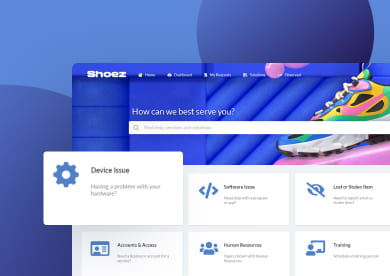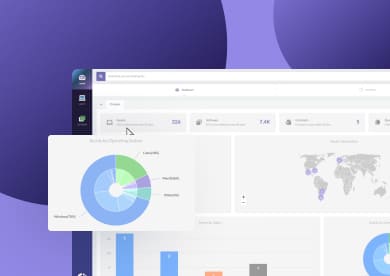If you're looking into IT process automation tools, you’ve come to the right place. There's plenty of room for automation in IT, yet many organizations still miss out on its benefits. A recent survey shows that 82% of IT professionals plan to update or expand their automation tools to better manage complex, hybrid environments.
This guide breaks down the keys to IT Process Automation, from system integration to Service Management, policy enforcement, and much more. Along the way, you'll find real-world examples, easy-to-understand tips, and a rundown of what can make a tool the right choice for your organization.
After gathering insights from our research, we've assembled the best IT Process Automation Software. Keep reading to find your path to smoother IT operations!
TL;DR
- IT process automation tools help IT teams reduce manual tasks, improve efficiency, and maintain consistency across operations. They range from integration platforms that connect different systems to Service Management suites and policy enforcement solutions.
- Key functions include automated workflows, system orchestration, security enforcement, and incident management. Choosing the right tool depends on integration needs, technical skills for setup effort, and pricing models.
- Jump to the list of tools!
What are IT Process Automation tools?
IT Process Automation tools are software applications that perform routine IT tasks without constant human oversight. They replace repetitive manual work with automated workflows that can handle data transfers, Incident Management, configuration changes, and even security responses.
Rather than being limited to one type of task, these solutions offer a broad spectrum of functions that support diverse operational needs.
Consider the following real-world scenarios:
- A system that monitors server performance can automatically generate an alert and open a service ticket when resource usage exceeds a threshold.
- Data that enters one application can be automatically transferred to another system, such as syncing user information between a CRM and an HR platform.
- When a network device deviates from security policies, a tool can trigger an automatic corrective action and document the incident for compliance purposes.

How to choose the right IT process automation software for you
There are many types of platforms that can fall into the “IT Process Automation tool” definition, so here's a look at several key categories, along with examples and practical tips to make your choice:
- Integration platforms:
- Purpose: Facilitate data exchange between multiple systems.
- Examples:
- Automatically syncing customer data between a CRM and a marketing platform.
- Transferring records from an internal database to an external analytics service.
- Tip: Verify that the tool supports connectors for both cloud and on-premises systems.
- Service Management suites:
- Purpose: Automate IT support tasks, such as ticketing, asset discovery and tracking, and service requests.
- Examples:
- Automatically routing service tickets based on issue type and priority.
- Managing asset inventories by tracking maintenance schedules and updates.
- Tip: Look for features like self-service portals and
- to monitor service performance.
- Policy enforcement systems:
- Purpose: Ensure network security and regulatory compliance by applying and monitoring policies automatically.
- Examples:
- Automatically applying firewall rules across all network devices.
- Enforcing configuration standards on servers and endpoints to meet compliance requirements.
- Tip: Choose tools that provide audit trails and detailed compliance reports.
- Infrastructure orchestration tools:
- Purpose: Automate the deployment, configuration, and scaling of IT infrastructure.
- Examples:
- Deploying virtual machines or containers in response to increased demand.
- Configuring server environments using code-based templates to maintain consistency.
- Tip: Evaluate integration with your cloud providers and consider whether a low-code interface meets your needs.
- Security automation platforms:
- Purpose: Streamline security operations by automating threat detection and response.
- Examples:
- Isolating compromised devices automatically upon detecting malware signatures.
- Initiating vulnerability scans after identifying suspicious network activity.
- Automated red teaming
- Tip: Ensure that the tool integrates with your existing security information and event management (siem) systems.
- Business process automation tools:
- Purpose: Extend automation beyond IT tasks to support broader business processes that affect IT operations. Sometimes, this is simply part of the suite in ITSM or ESM platforms.
- Examples:
- Automating approval workflows for IT procurement requests.
- Syncing financial data with Service Management records to streamline budgeting.
- Automating HR tasks like onboarding and offboarding with workflows.
- Tip: Opt for platforms that offer customizable workflows to adapt to your organization's unique processes.
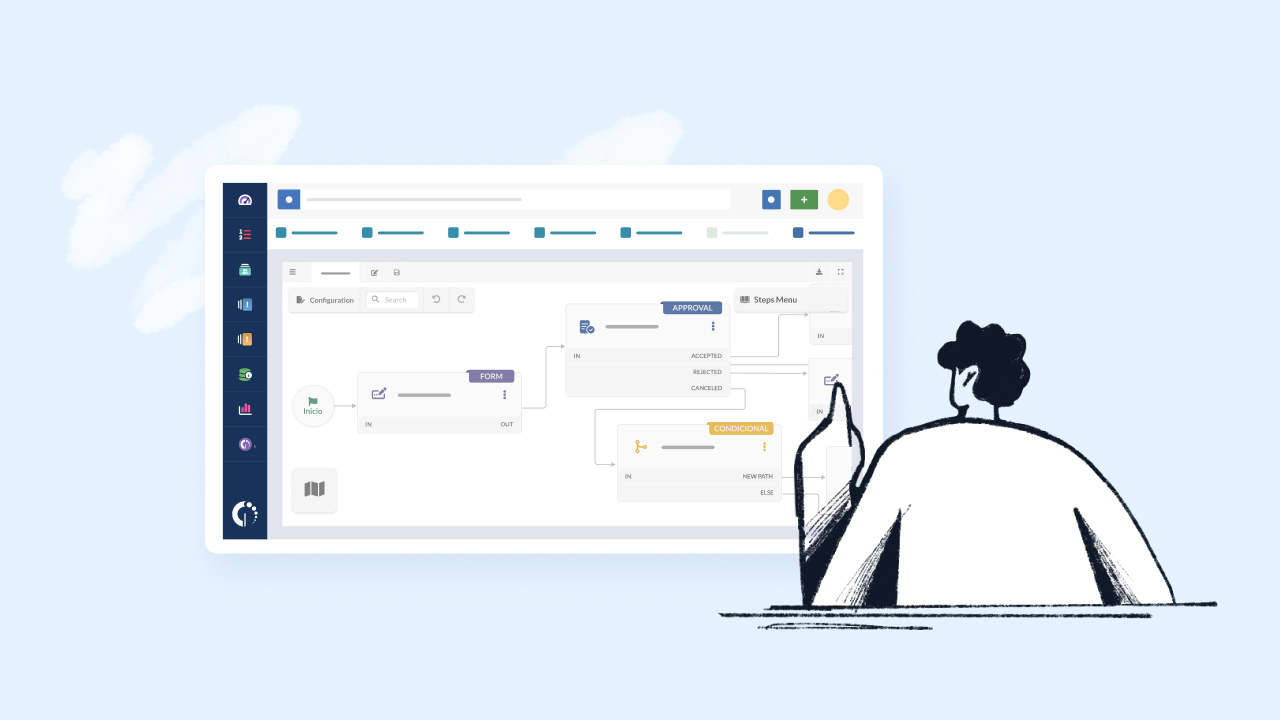
Top IT Process Automation tools for 2025
Below are our 10 expert picks for IT Process Automation tools. Each tool is explained in detail, including its primary functions, integration capabilities, setup effort, ideal use cases, and benefits. In addition, we offer a quick overview of features and pricing models to help you make an informed decision.
InvGate Service Management and Asset Management
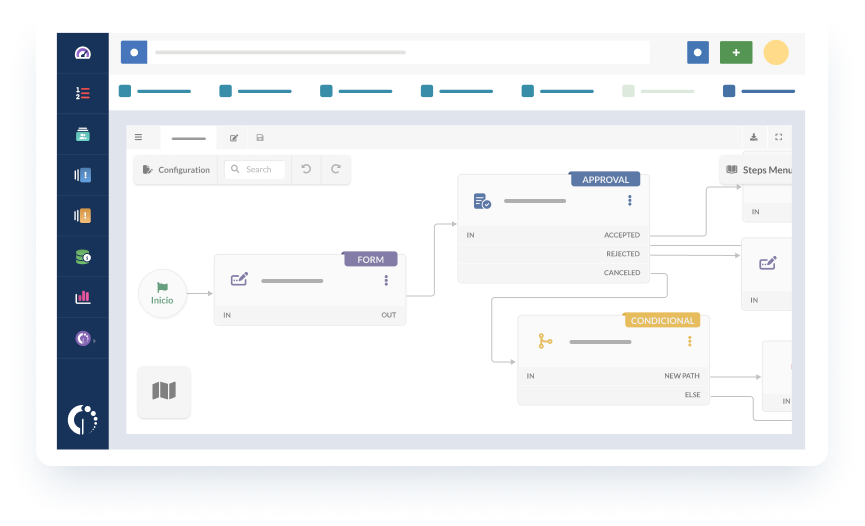
InvGate offers both Service Management and Asset Management with robust no-code workflow capabilities. The tool simplifies tasks such as incident resolution, request fulfillment, and asset tracking, integrating easily with external systems like databases and monitoring platforms.
Many IT teams appreciate its intuitive interface, which requires a moderate configuration effort yet provides significant improvements in process consistency. Its design suits organizations looking to automate routine IT tasks while keeping a close eye on Service Management metrics.
With InvGate, organizations can automate many processes, including ticket routing, approval workflows, and automated notifications, ensuring that IT operations run smoothly and efficiently.
Overview of features
- No-code workflow builder
- Automated asset tracking
- Service Request Management
- SLA tracking
- Integration Hub
- Reporting and analytics
- Patch management
- AI-enhanced ticket responses
InvGate pricing model
InvGate's pricing model is flexible and tailored to each organization's specific needs.
- InvGate Service Management: Pricing scales per agent per month, with options for Starter, Pro, and Enterprise tiers.
- Starter: $17 per agent per month, billed annually at $999.
- Pro: $40 per agent per month, billed annually.
- Enterprise: Requires a custom quote.
- InvGate Asset Management: Pricing scales per node per month, with Starter, Pro, and Enterprise tiers available.
- Starter: $0.21 per node per month, billed annually at $1250.
- Pro: $0.38 per node per month, billed annually.
- Enterprise: Requires a custom quote
You can also request a 30-day free trial!
InvGate user reviews
InvGate Service Management holds 4.6 out of 5 stars in G2.
“InvGate Service Management allowed us to combine these two elements: an impressive tool in the backend, providing solid data and metrics, while also being attractive and easy to use for users in the front end.”
Pablo Godoy, Chief Technology Officer at Grupo Cepas
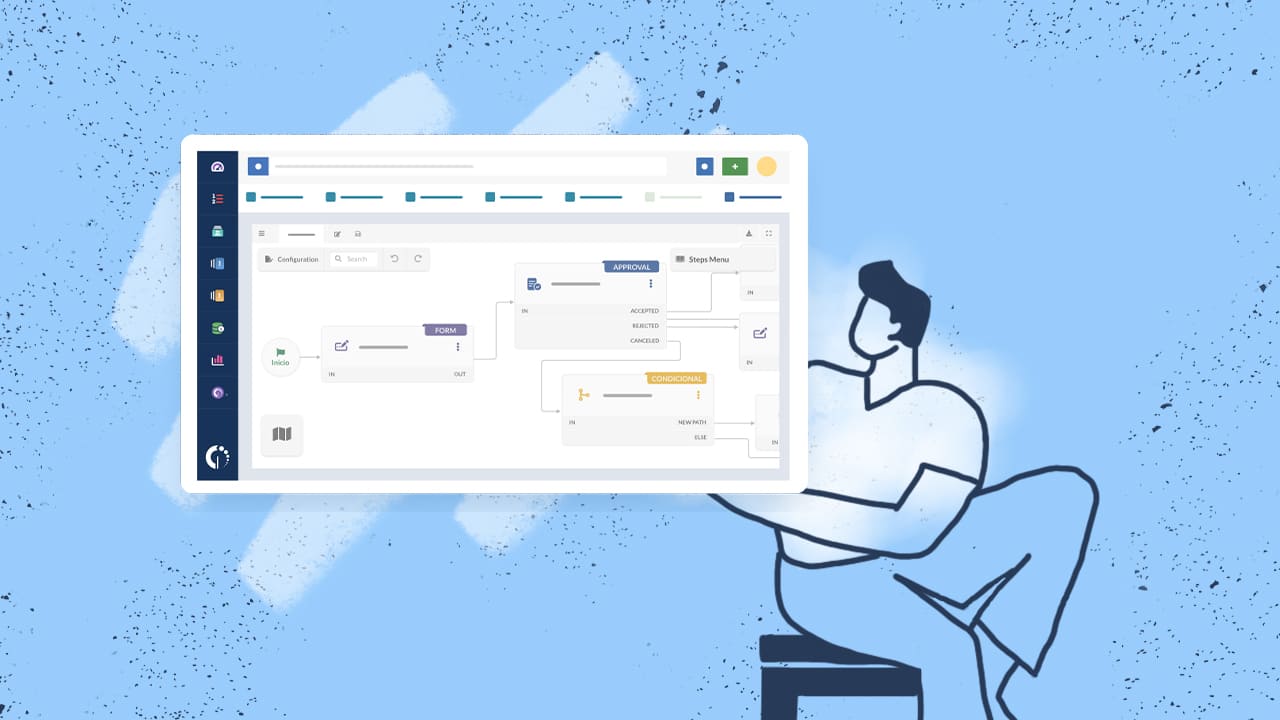
Zapier
Zapier is an integration platform that connects over 2,000 web applications. It creates automated workflows, known as “zaps,” that transfer data between services without manual intervention.
It’s quite a popular tool that features a user-friendly visual interface, making it accessible to nontechnical users who need to connect various cloud apps quickly. Zapier is ideal for automating data exchanges, such as syncing updates between different tools, thereby reducing repetitive manual tasks.
Overview of features
- Extensive app library
- Trigger-action workflow creation
- Real-time notifications
- Task automation
- Visual workflow editor
Zapier pricing model
- Free: 5 workflows ("Zaps"), 100 automated actions/month
- Professional ($29.99/month): Unlimited Zaps, 2,000 actions, faster updates (2 mins)
- Team ($103.50/month): 50K actions, shared workspaces, priority support
- Enterprise: Request quote
Zapier user reviews
Zapier holds 4.5 our of 5 stars at G2.
"Zapier can execute our actions at a particular time of our choice. It easily integrates with allmost all of our required apps and services very easily. It doesn't require us to learn any type of technical skills it uses a simple point and click interface. "
User review from G2 (AI Software Engineer)
Microsoft Power Automate
Microsoft Power Automate helps build automated workflows across Microsoft products and third-party applications. Its drag-and-drop interface and pre-built templates make the process of creating custom workflows straightforward, even for users without extensive coding experience.
The tool connects cloud services with on-premises systems, ensuring data flows consistently between diverse applications. Of course, organizations deeply invested in the Microsoft ecosystem will get the most value out of this tool.
Overview of features
- Intuitive workflow designer
- Pre-built automation templates
- Cloud and on-premises integration
- Extensive connector library
- Mobile Accessibility
Microsoft Power Automate pricing model
Microsoft Power Automate offers four distinct pricing plans tailored to different business needs. The pricing is divided mainly into two categories: per-user plans and per-flow plans.
Here's a breakdown of the pricing tiers.
- Power Automate Premium: $15 per user/month
- Best for businesses needing advanced automation capabilities. It enables users to automate applications via API-based digital process automation (cloud flows) and UI-based robotic process automation (desktop flows) in attended mode.
- Power Automate Process: $150 per bot/month.
- Ideal for automating core enterprise processes with unattended RPA.
- Power Automate Hosted Process: $215 per flow/month.
- Best plan for businesses needing Microsoft-managed infrastructure for automation.
Dell Boomi
Dell Boomi stands out as a robust integration platform focused on connecting cloud-based and on-premises systems. Its visual interface and pre-built connectors simplify mapping data flows between disparate applications, reducing the need for extensive custom coding.
The tool supports complex, real-time data synchronization and works well in environments where diverse systems need to interact reliably. Its low-code approach eases long-term maintenance and scalability.
Overview of features
- Visual integration builder
- Pre-built connectors
- Data mapping and transformation
- Real-time monitoring
- Scalable cloud integration
Dell Boomi pricing model
Dell Boomi operates on a subscription-based model with various tiers designed to meet different-sized businesses and integration needs. The cost of a Boomi subscription depends on variables such as the number of connectors, integration processes, environments, and the volume of data.
Dell Boomi also has 4 main components to determine pricing:
- The number of independent systems being connected.
- The optional API Management component.
- The optional Master Data Management component.
- Boomi Flow (low-code component for application development).
Note: Dell Boomi doesn’t publish specific pricing for the tiers on its website. You’ll need to contact their sales team for customized quotes.
Dell Boomi user reviews
Dell Boomi holds 4.4 out of 5 stars in G2.
"When it comes to data automation, Boomi's rich feature set is second to none. It has an easy-to-use interface thanks to its modules for connecting to various web services (HTTP, SOAP, and JSON) and its integration with many popular applications and services. We like it because its developer platform allows us to create our own applications, which is great for meeting specific needs."
User review in G2 (Project Manager)
Workato
Workato is an advanced integration and automation platform that marries extensive app connectivity with robust workflow automation. Its user-friendly interface helps IT teams create both simple and complex automated tasks that can span multiple systems. Workato’s AI-powered data mapping and customization options make it versatile for a range of use cases, from syncing customer data to initiating multi-step IT operations.
This platform works well for organizations looking to reduce manual data transfers and streamline cross-system communication.
Overview of features
- Automated multi-step workflows
- Extensive integration library
- AI-enhanced data mapping
- Real-time analytics
- Customizable connectors
Workato pricing model
Workato's pricing model combines a platform plan fee and a usage fee based on task consumption. A task is an action, step, or request taken in a workflow. While Workato does not publicly list detailed pricing, here's a breakdown of what's known:
General structure:
- Workspace (Required): Every customer must choose a workspace plan.
- Tasks (As Needed): Customers pay for the number of tasks they require, with volume discounts available starting at 1 million tasks
Tufin
Tufin focuses on policy enforcement and security automation, making it well-suited for organizations with strict compliance and security requirements. The tool automates the monitoring and application of network security policies, ensuring consistency across firewalls and security devices.
It integrates with various security and network monitoring systems, providing centralized control over policy changes and compliance audits. Although the initial setup is moderately involved, the detailed reporting and audit trails significantly aid teams managing complex network environments.
Overview of features
- Network policy orchestration
- Compliance monitoring
- Automated Change Management
- Risk analysis dashboards
- Integration with security devices
Tufin pricing model
Pricing is tiered and usage-based, depending on devices and apps. Contact Tufin directly for a custom quote. Tufin offers three subscription options:
- SecureTrack+ (Firewall & Security Policy Management)
- Monitoring network health, policy visibility, compliance reporting, and risk reduction.
- SecureChange+ (Network Security Change Automation)
- All SecureTrack+ features, enhanced automation for network access requests, rule modification, topology mapping, and "what-if" path analysis.
- Enterprise (Zero-Trust Network Security at Scale)
- All SecureChange+ features, plus advanced capabilities for large-scale, zero-trust deployments.

Red Hat Ansible automation platform
Red Hat Ansible Automation Platform is a popular choice for automating configuration management, application deployment, and policy enforcement. Its playbook-driven approach, using simple YAML files, allows IT teams to script and manage routine tasks efficiently.
The platform’s agentless design and broad integration with cloud and on-premises services make it a versatile tool for infrastructure orchestration. Despite a learning curve in writing playbooks, extensive community support and documentation help users quickly gain proficiency.
Overview of features
- Configuration management
- Playbook-based automation
- Agentless architecture
- Integration with cloud services
- Audit and reporting capabilities
Red Hat Ansible pricing model
Subscription-based, with enterprise-focused options. Pricing varies based on sizing and subscription choices; contacting Red Hat for a customized quote is recommended. Initial deployment costs may be higher due to the inclusion of professional services and training.
Costs may vary depending on the level of support you choose: Standard () to 5 support) or Premium (24/7 support)
Also, depending on the deployment option you choose, billing may be handled differently. For example, if you deploy Red Hat Ansible Automation Platform through the AWS Marketplace, you can expect to be billed by AWS.
Red Hat Ansible user reviews
Red Hat Ansible Automation holds 4.6/5 starts in G2.
"The best feature of Red Hat Ansible Platform is its Automation Controller. It provides a centralized, easy-to-use interface for managing, scheduling, and scaling automation tasks across large environments."
User review from G2 (Scrum Master)
StackStorm
StackStorm is an open-source, event-driven automation platform designed to respond to real-time operational events. Its flexible rule engine allows the creation of custom workflows that trigger actions in response to specific system events, such as alerts or scheduled tasks.
The platform integrates well with various monitoring and IT management systems, offering tailored automation solutions for complex operational needs. Although it requires a higher degree of technical expertise for setup and customization, the flexibility and scalability make it an attractive option for experienced teams.
Overview of features
- Event-driven automation
- Customizable rule engine
- Integration with monitoring tools
- Open-source flexibility
- Scalable orchestration
StackStorm pricing model
Open-source with available enterprise support options.
IT automation software key functions
IT automation software comes with a variety of functions that can be tailored to address specific needs within an organization. Some of the most important capabilities (but certainly not limited to these) include:
- Automated workflows:
Visual workflow designers allow you to map out processes where actions trigger automatically based on certain conditions. For example, if a monitoring tool flags a potential server issue, the automation platform can open an incident ticket, alert support staff, and even launch initial diagnostic scripts. - System integration:
IT automation software enhances system integration by utilizing APIs, which act as intermediaries, allowing different software applications to communicate with each other. Developers can customize API integrations to fit specific business needs, but, in general, IT automation software offers out-of-the-box integrations or no-code solutions. This way, non-technical users can also easily set up and manage integrations. - Incident Management and Ticket Routing:
IT automation software can streamline the response to support requests. For example, it uses predefined rules and AI to route tickets to the appropriate team or individual. It can also automatically assign priority levels to tickets or automatically escalate tickets that are not resolved. - Policy and compliance automations:
Some platforms automatically enforce security protocols and update network policies. For instance, if a device’s configuration drifts from the approved standard, the tool can either alert the IT team or apply a corrective measure automatically. - Monitoring, reporting, and analytics:
Real-time dashboards and detailed logs allow IT teams to track the performance of automated processes. These insights help pinpoint recurring issues and support continuous improvement. - Infrastructure orchestration:
Automation platforms can handle the deployment, configuration, and scaling of servers and cloud resources. For example, when demand increases, a tool can automatically spin up additional instances and configure them to meet current needs. - Security incident automation:
Integration with threat detection systems allows these tools to respond to security alerts automatically. In one instance, if unusual network activity is detected, the tool can isolate affected systems and notify security personnel.

Why do you need IT automation tools?
Using IT Process Automation Software goes beyond saving time. Our experience indicates that it contributes to more effective and reliable IT operations. Here are some key benefits:
- Reduction in manual errors: Automated processes help maintain consistency in tasks such as data entry and ticket assignment.
- Faster response times: When incidents trigger automatic alerts or actions, IT teams can address issues more quickly.
- Enhanced compliance and security: Tools that enforce policies help maintain uniform configurations and document actions for audits.
- Efficient resource allocation: Automating routine tasks frees up IT staff to focus on strategic projects rather than repetitive activities.
- Scalability: Automated workflows can easily adjust to higher volumes of work, supporting organizational growth without a proportional increase in manual effort.
Final thoughts
IT Process Automation tools offer a wide range of benefits that extend well beyond reducing manual workload. The ideal solution depends on your organization’s unique challenges or needs — maybe that’s integrating multiple systems, automating Service Management, enforcing security policies, orchestrating infrastructure, or even automating broader business processes.
We recommend you map out your current workflows and evaluate the specific functions you require. This way, you can select a tool that not only simplifies everyday tasks but also supports long-term operational improvements.
Our detailed analysis and practical tips are meant to guide you toward a solution that makes a measurable difference in your IT operations. Happy automating!
